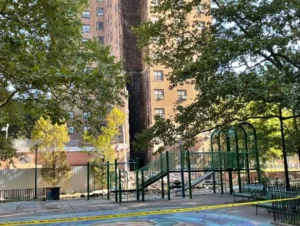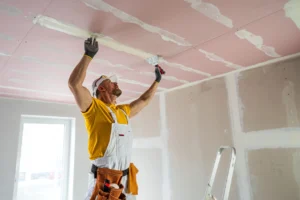Here is One Apartment Landlord Who Is Raising Rents
 While it hasn’t suffered as much as other asset classes, multifamily has gotten hit by the pandemic.
While it hasn’t suffered as much as other asset classes, multifamily has gotten hit by the pandemic.
In a recent report, Yardi noted that multifamily rents declined by 0.8% in December on a year-over-year basis, a 30-basis-point decline from November. Overall, December saw a $4 decrease in rents to $1,462. That was the largest one-month decline since the beginning of the pandemic, when overall rents dropped by $5 in April.
Still, there are pockets of strength. While high-cost metros like New York and San Francisco struggled, almost half of the top 30 markets finished the year with flat or positive year-over-year rent growth, according to Yardi. It says that Tampa (0.9%) led the top 30 markets on a month-over-month basis in December. The Inland Empire, Phoenix and Orange County followed behind with 0.5%.
Joe Lubeck, CEO, American Landmark, is one of those apartment owners who have raised rents. He says rents have gone up 4% across his Southeastern portfolio, though he has had to work with some residents on payment plans.
“I think it [the movement of people to the Southeast] is absolutely long-term,” Lubeck says. “In particular, the movement of jobs and population to the South will continue. Once somebody moves here, they’re not likely to leave, particularly given the favorable business climate tax and climate weather.”
Even with the strong rental trends in the Sunbelt, Lubeck was happy Congress passed the $900 billion rescue package in December.
“We’re glad to see that they are going to provide additional support to people who are having problems with employment,” Lubeck says. “But we were not happy with some of the anti-eviction measures that are likely to accompany it. We’ve worked with many of our residents on payment plans, but for those who simply refuse to pay don’t deserve protection.”
Even with some rent payment issues in the border apartment market, the appetite for multifamily remains strong among investors. The sector posted the most sales in 2020 among all commercial real estate property types, according to Real Capital Analytics.
That demand is especially strong in hot markets.
“We have found as a result of the pandemic, there is a demand for the Sunbelt strategy,” Joe Lubeck, CEO, American Landmark, told GlobeSt.com. “Apartments are strong, and more and more people are moving here from the North to the South and from the coasts to the Sunbelt, which we think is obviously great for our business model.”
Lubeck sees more industry investment coming in smart systems that allow people to open their door, set the thermostat and turn on the water with their smartphone coming in the future.
The company was already leasing virtually when the pandemic hit, but it has also increased its use of artificial intelligence capabilities to be on the cutting edge as technology advances. “We use artificial intelligence for revenue setting, but we’re also using artificial intelligence to respond to inquiries and to take people on tours virtually,” Lubeck says.
Source: globest.com













 Accessibility
Accessibility